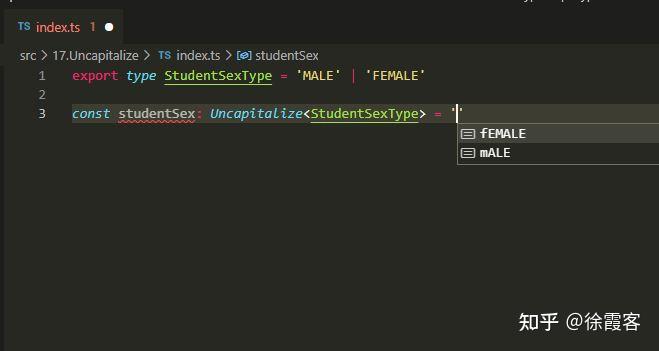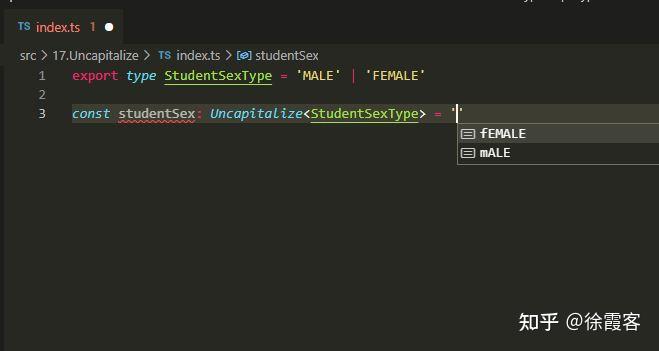Partial(部分的)
/**
* Make all properties in T optional
*/
type Partial<T> = {
[P in keyof T]?: T[P];
};
作用是让传入类型中的所有属性变成都是可选的
使用举例
export interface Student {
name: string;
age: number;
}
const student1: Student = {}
const student2: Partial<Student> = {}


变量student1的类型是Student,Student默认所有的属性都是不能为空的,所有会报错,student2就不会
Required(必须的)
/**
- Make all properties in T required
*/
type Required<T> = {
[P in keyof T]-?: T[P];
};
跟Partial的作用是相反的,是让传入类型中的所有属性变成都是必填的
使用举例
export interface Student {
name?: string;
age?: number;
}
const student1: Student = {}
const student2: Required<Student> = {}
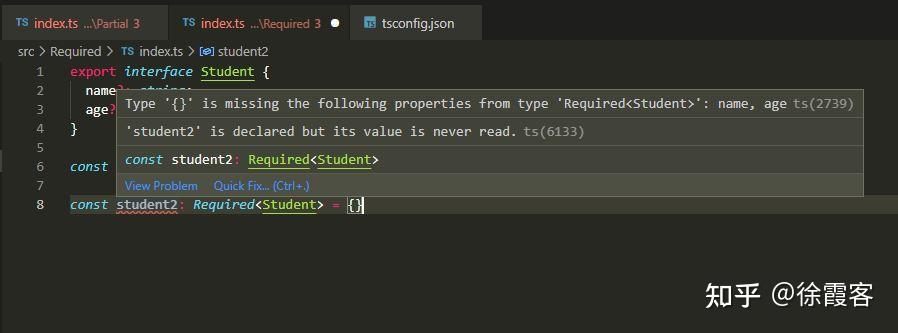
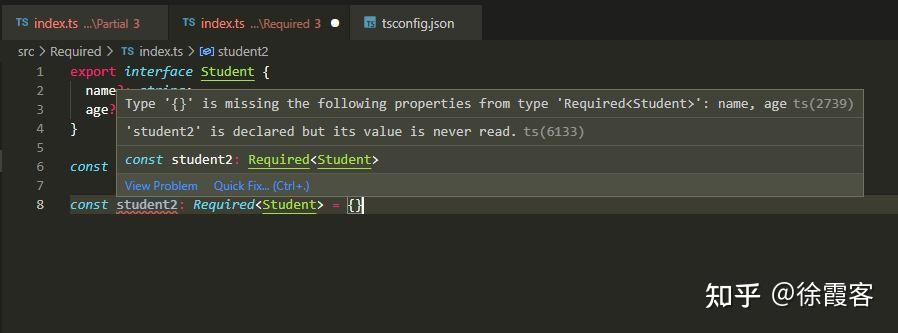
变量student1的类型是Student,Student默认所有的属性都是可以为空的,所有不会报错,student2会报错
Readonly(只读的)
/**
- Make all properties in T readonly
*/
type Readonly<T> = {
readonly [P in keyof T]: T[P];
};
作用是让传入类型中的所有属性变成都是只读的(不能修改属性)
使用举例
export interface Student {
name: string;
age: number;
}
const student1: Student = {
name: ‘张三’,
age: 20
}
student1.age = 21
const student2: Readonly<Student> = {
name: ‘李四’,
age: 20
}
student2.age = 21
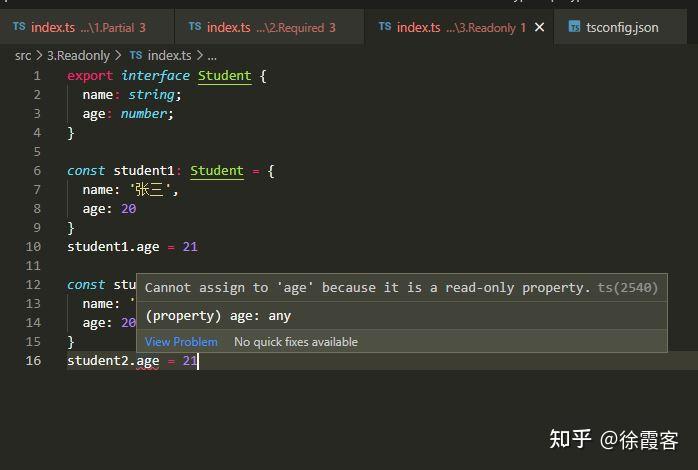
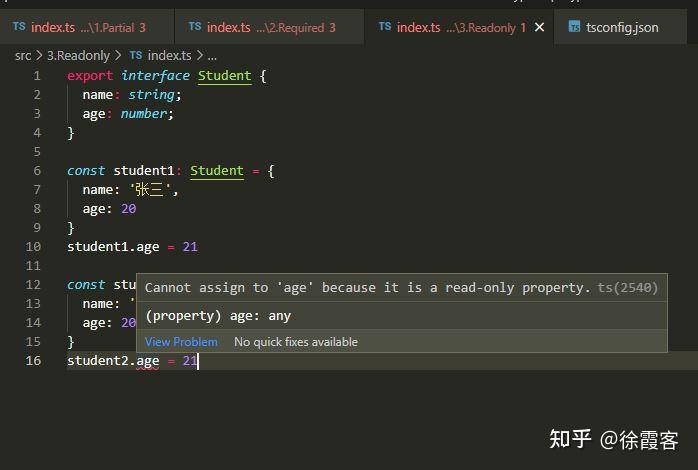
给student1的属性age重新赋值不会报错,给student2的属性age重新赋值就会报错,因为student2所有的属性都是只读的
Pick(选择)
/**
- From T, pick a set of properties whose keys are in the union K
*/
type Pick<T, K extends keyof T> = {
[P in K]: T[P];
};
作用是选择传入类型中的部分属性组成新类型
使用举例
export interface Student {
name: string;
age: number;
}
const student1: Student = {
name: ‘张三’,
age: 20
}
const student2: Pick<Student, ‘name’> = {
name: ‘李四’
}
const student3: Pick<Student, ‘name’> = {
name: ‘王五’,
age: 20
}
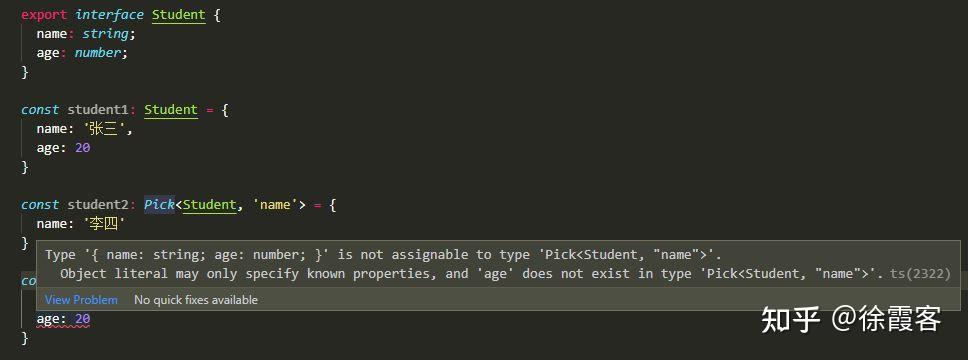
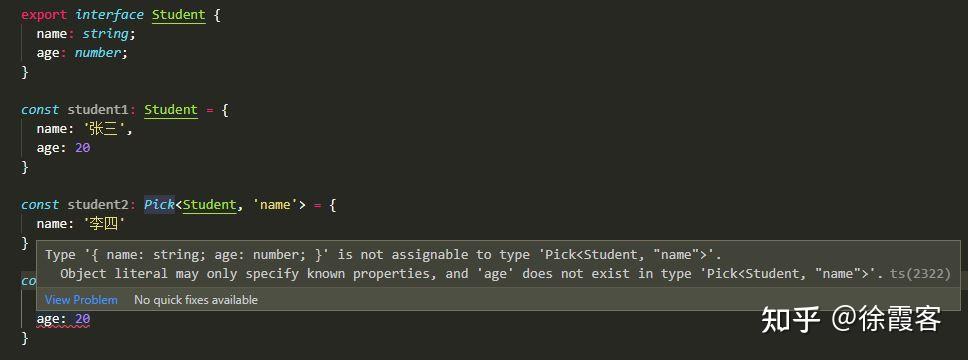
变量student1可以有所有属性name和age,变量student2就只能有属性name,变量student3加上属性age就会报错
Record(记录)
/**
- Construct a type with a set of properties K of type T
/
type Record<K extends keyof any, T> = {
[P in K]: T;
};
作用是构建一个类型,这个类型用来描述一个对象,这个对象的属性都具有相同的类型
使用举例
export const student1: Record<string, any> = {
name: ‘张三’,
age: 20
}
Record应该是日常使用频率较高的内置类型了,主要用来描述对象,一般建议是不用Object来描述对象,而是用Record代替,Record<string, any>几乎可以说是万金油了
Exclude(排除)
/* - Exclude from T those types that are assignable to U
*/
type Exclude<T, U> = T extends U ? never : T;
针对联合类型(interface这种没用),用人话说,排除相同的,留下不同的
使用举例
export type PersonAttr = ‘name’ | ‘age’
export type StudentAttr = ‘name’ | ‘age’ | ‘class’ | ‘school’
const student1: Exclude<StudentAttr, PersonAttr>
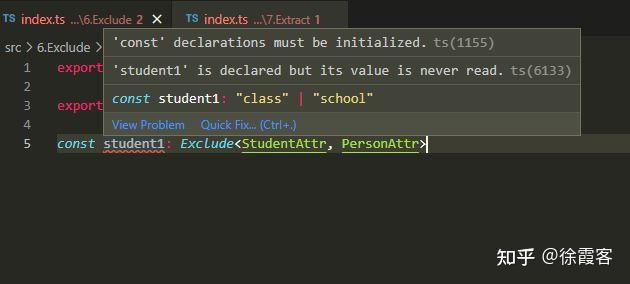

student1就只能被赋值为’class’ 或者’school’
Extract(取出)
/**
- Extract from T those types that are assignable to U
*/
type Extract<T, U> = T extends U ? T : never;
与Exclude相反,针对联合类型,排除不同的的,取出相同的
使用举例
export type PersonAttr = ‘name’ | ‘age’
export type StudentAttr = ‘name’ | ‘age’ | ‘class’ | ‘school’
const student1: Extract<StudentAttr, PersonAttr>
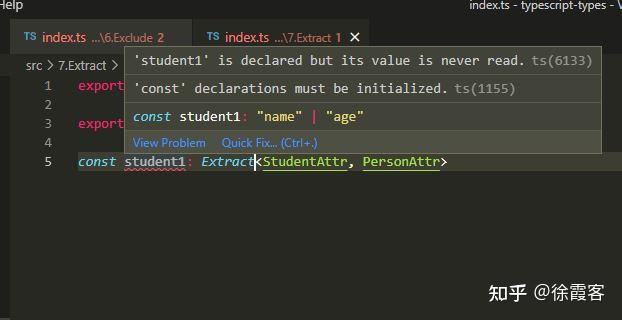
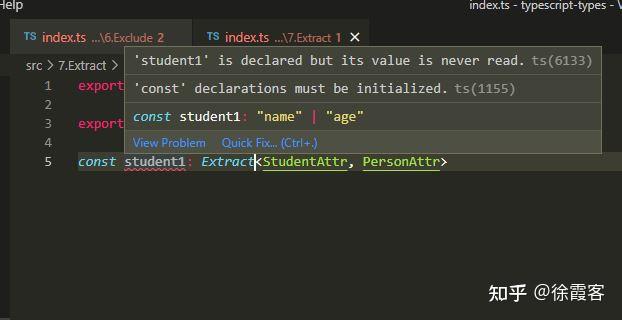
student1就只能被赋值为’name’或者’age’
Omit(省略)
/**
- Construct a type with the properties of T except for those in type K.
*/
type Omit<T, K extends keyof any> = Pick<T, Exclude<keyof T, K>>;
传入一个类型,和这个类型的几个属性,把传入的属性省略掉,组成一个新类型
使用举例
export interface Student {
name: string;
age: number;
class: string;
school: string;
}
export type PersonAttr = ‘name’ | ‘age’
export type StudentAttr = ‘name’ | ‘age’ | ‘class’ | ‘school’
const student1: Omit<Student, PersonAttr> = {}
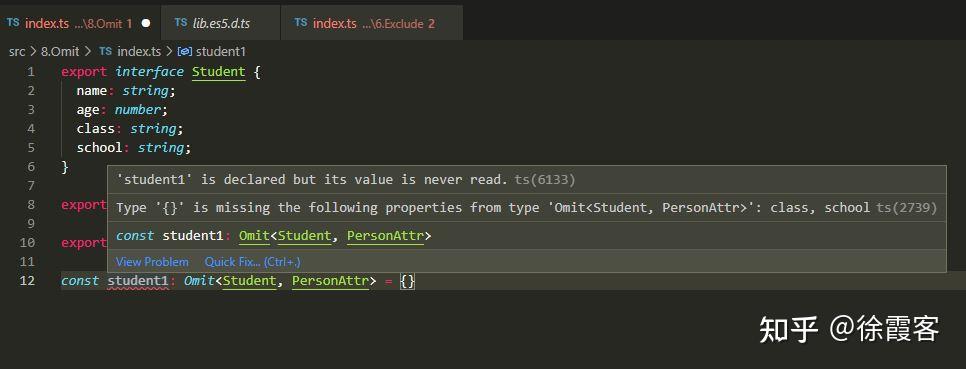
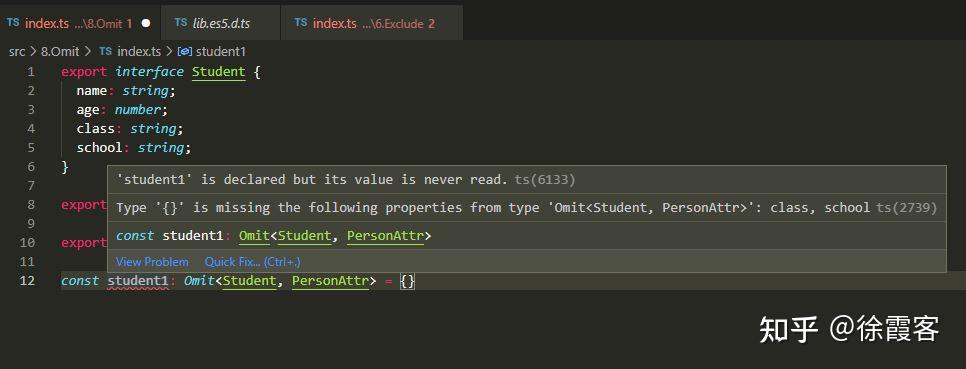
student1报错,提示没有属性’name’、‘age’
NonNullable(不能为null)
/**
- Exclude null and undefined from T
*/
type NonNullable<T> = T extends null | undefined ? never : T;
字面意思,不能为空
使用举例
export interface Student {
name: string;
age: number;
}
const student1: NonNullable<Student | undefined | null> = null
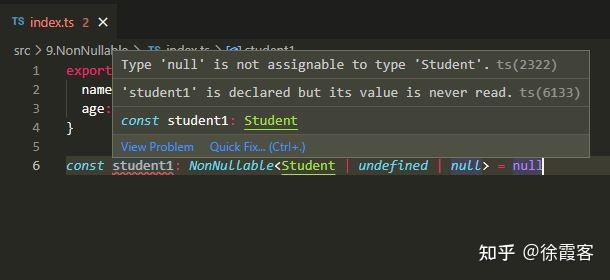
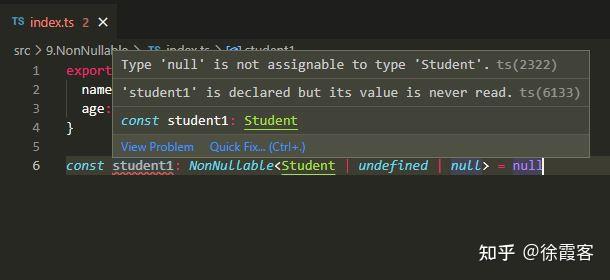
student1赋值为null会报错(在tsconfig.json配置文件中开启类型检查,“skipLibCheck”: false)
Parameters(参数)
/**
- Obtain the parameters of a function type in a tuple
*/
type Parameters<T extends (…args: any) => any> = T extends (…args: infer P) => any ? P : never;
获取传入函数的参数组成的类型
使用举例
export interface Student {
name: string;
age: number;
}
export interface StudentFunc {
(name: string, age: number): Student
}
const student1: Parameters<StudentFunc>
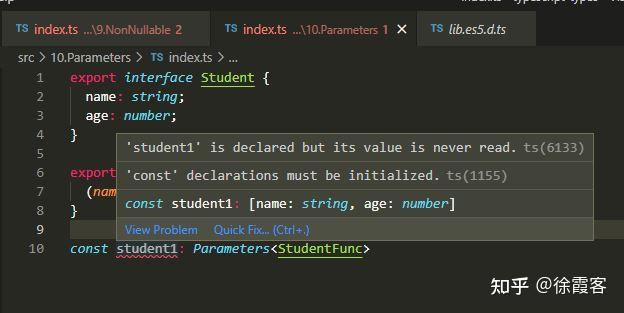

student1的类型为[name: string, age: number]
ConstructorParameters(构造参数)
/**
- Obtain the parameters of a constructor function type in a tuple
*/
type ConstructorParameters<T extends abstract new (…args: any) => any> = T extends abstract new (…args: infer P) => any ? P : never;
获取传入构造函数的参数组成的类型
使用举例
export interface Student {
name: string;
age: number;
}
export interface StudentConstructor {
new (name: string, age: number): Student
}
const student1: ConstructorParameters<StudentConstructor>
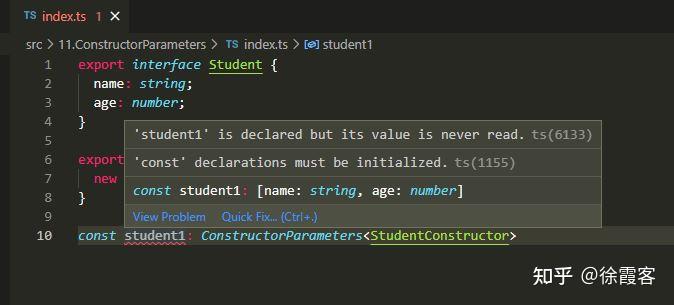
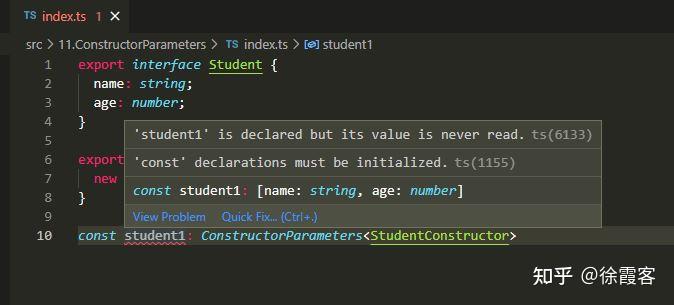
student1的类型为[name: string, age: number]
ReturnType(返回类型)
/**
- Obtain the return type of a function type
*/
type ReturnType<T extends (…args: any) => any> = T extends (…args: any) => infer R ? R : any;
获取传入函数的返回类型
使用举例
export interface Student {
name: string;
age: number;
}
export interface StudentFunc {
(name: string, age: number): Student
}
const student1: ReturnType<StudentFunc> = {}
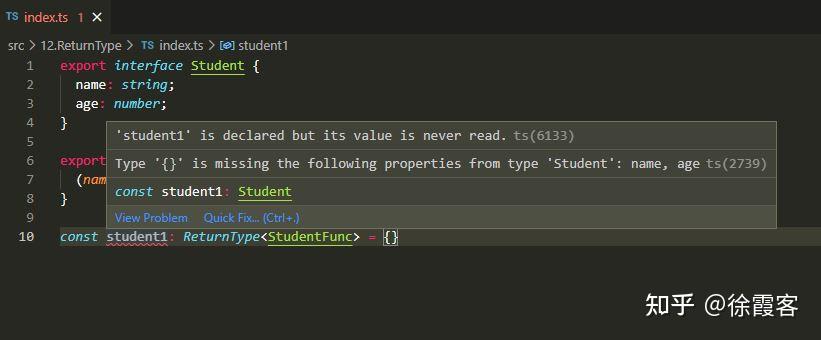
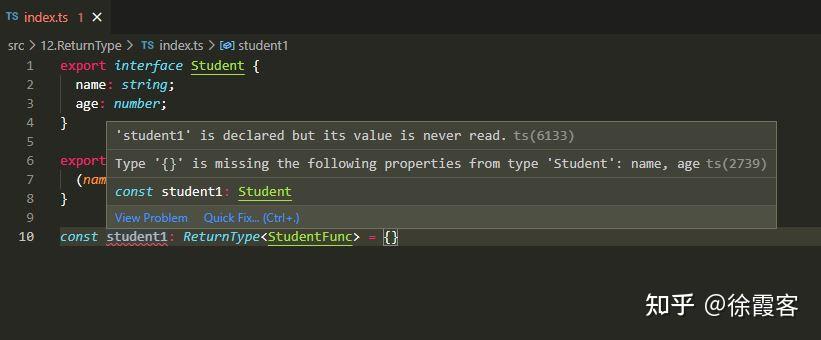
student1的类型为Student
InstanceType(构造返回类型、实例类型)
/**
- Obtain the return type of a constructor function type
*/
type InstanceType<T extends abstract new (…args: any) => any> = T extends abstract new (…args: any) => infer R ? R : any;
获取传入构造函数的返回类型
使用举例
const Student = class {
name: string;
age: number;
constructor (name: string, age: number) {
this.name = name
this.age = age
}
showInfo () {
console.log('name: ', this.name, 'age: ', this.age);
}
}
const student1: InstanceType<typeof Student> = new Student(‘张三’, 20)
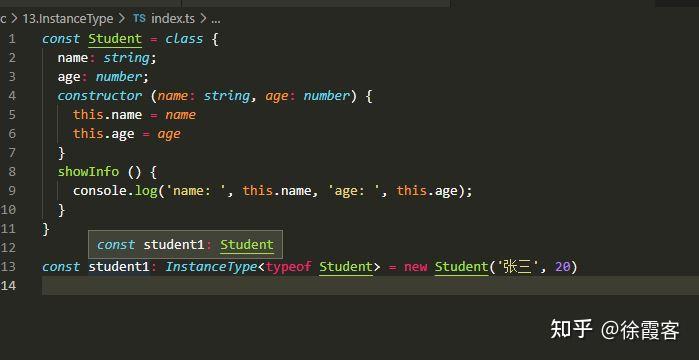
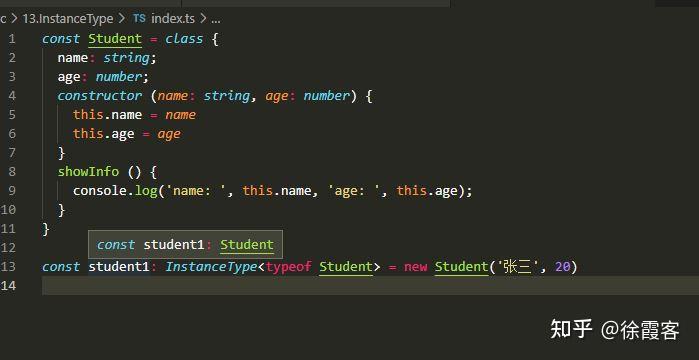
个人认为这是一个非常好用的内置类型,目前在前端项目中,class是用的越来越多了,在TS中,class其实也是可以用作类型声明空间的,用来描述对象类型,但是一般来说好像很少这样用的,一般用interface或者type居多
export class Student {
name: string;
age: number;
}
所以一般就是直接把class用作变量声明空间,但是对于 class new 出的实例,怎么描述它的类型呢,就如上文的,直接const student1: Student那是铁定会报错的,因为Student用作变量声明空间,没有用作类型声明空间(听起来好绕),这时候就可以用到InstanceType,完美解决问题
Uppercase(大写)
/**
- Convert string literal type to uppercase
*/
type Uppercase<S extends string> = intrinsic;
变大写
使用举例
export type StudentSexType = ‘male’ | ‘female’
const studentSex: Uppercase<StudentSexType> = ‘MALE’
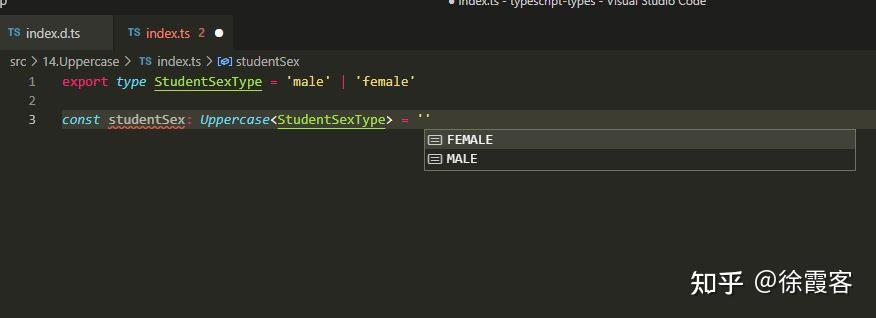
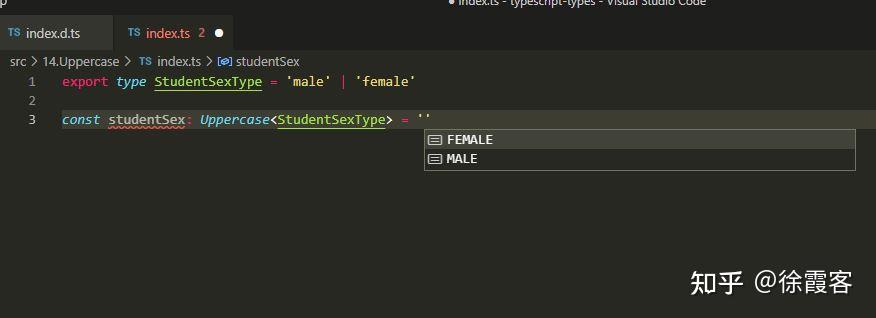
Lowercase(小写)
/**
- Convert string literal type to lowercase
*/
type Lowercase<S extends string> = intrinsic;
变小写
使用举例
export type StudentSexType = ‘MALE’ | ‘FEMALE’
const studentSex: Lowercase<StudentSexType> = ‘’
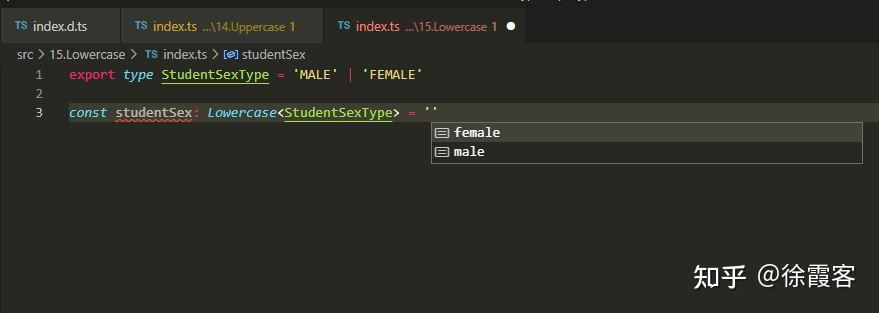
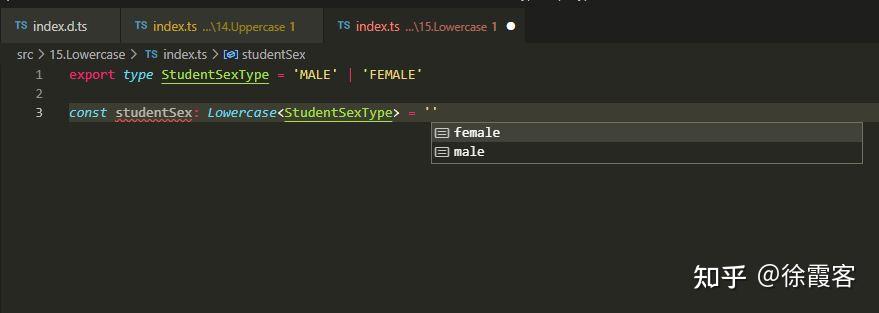
Capitalize(首字母大写)
/**
- Convert first character of string literal type to uppercase
*/
type Capitalize<S extends string> = intrinsic;
首字母变大写
使用举例
export type StudentSexType = ‘male’ | ‘female’
const studentSex: Capitalize<StudentSexType> = ‘’
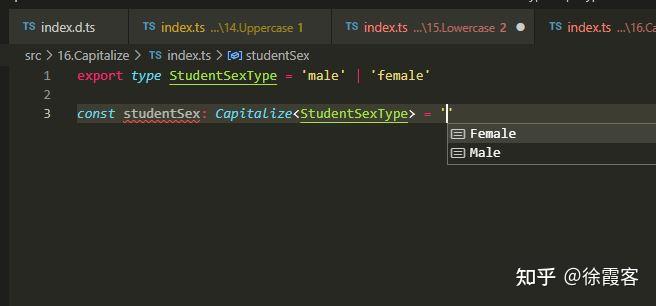
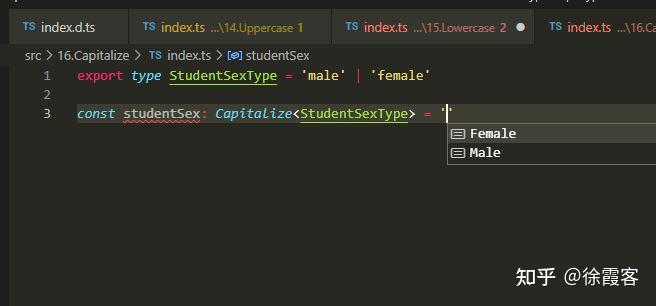
Uncapitalize(首字母小写)
/**
- Convert first character of string literal type to lowercase
*/
type Uncapitalize<S extends string> = intrinsic;
首字母变小写
使用举例
export type StudentSexType = ‘MALE’ | ‘FEMALE’
const studentSex: Uncapitalize<StudentSexType> = ‘’
